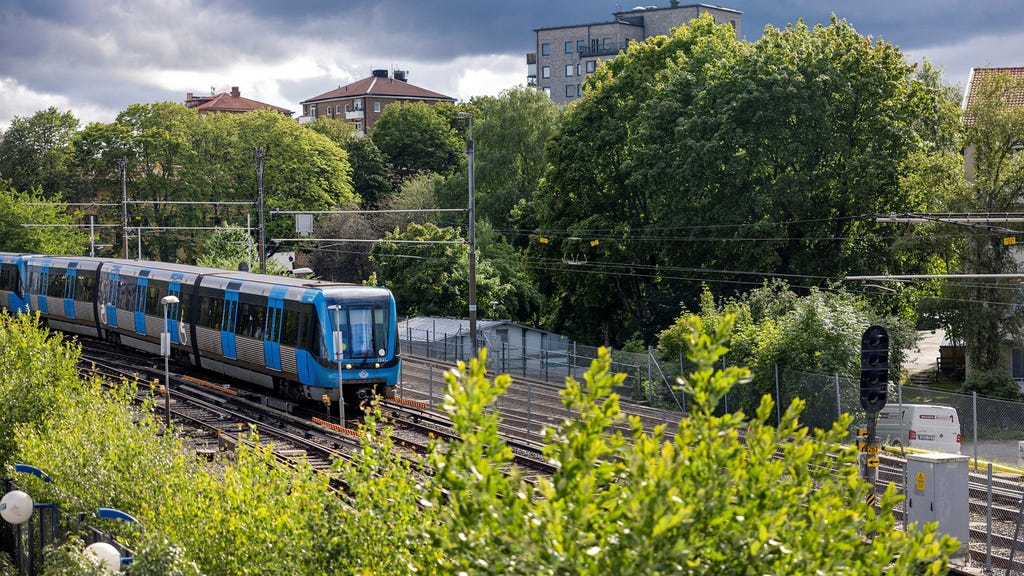The Scorching Commute: Examining the Cost of Cooling Stockholm’s Green Line
The stark contrast between Stockholm’s frigid winter and its sweltering summer highlights a recurring issue for commuters on the city’s public transport system, SL: the lack of air conditioning on the C20 trains servicing the Green Line. While the newer C30 trains on the Red Line offer a respite from the heat with their built-in AC units, the 270 C20 cars, operating on the Green Line, leave passengers to contend with stifling temperatures, sometimes prompting official advisories to carry water bottles during peak summer days. This disparity in passenger comfort has sparked a debate, spearheaded by local politicians from the Sweden Democrats party, regarding the feasibility and cost-effectiveness of retrofitting the older C20 trains with air conditioning.
The central question revolves around balancing passenger comfort and the substantial financial investment required for such an upgrade. While the SL transport authority acknowledges the merits of air conditioning, particularly during heatwaves, it also points to the prohibitive cost. Citing studies from the train manufacturer, Bombardier, the estimated expense of equipping all C20 passenger compartments with air conditioning surpasses one billion Swedish kronor. This hefty price tag considers not only the initial installation but also the ongoing operational and maintenance costs associated with the new systems. Given the age of the C20 fleet, delivered between 1997 and 2004, the SL transport authority argues that the benefits for the remainder of the trains’ lifespan do not outweigh the financial burden and potential technical challenges.
The technical hurdles are not insignificant. Integrating air conditioning into the existing C20 design would necessitate extensive modifications to the carriage structure, ductwork, and electrical systems. These alterations would ripple beyond the trains themselves, requiring adjustments to the depot facilities where the trains are housed and maintained. The complexity and scope of these changes add another layer to the already substantial financial considerations, making the prospect of retrofitting even less appealing from a cost-benefit perspective. The SL transport authority’s analysis indicates that the limited remaining lifespan of the C20 trains renders such a large-scale investment impractical.
The debate underscores the challenging balancing act faced by public transport providers. On one hand, there’s the imperative to provide a comfortable and appealing service to encourage ridership and reduce reliance on private vehicles. On the other hand, there are the constraints of budget and the need to prioritize investments that offer the greatest return in terms of improved service and longevity. In this case, the substantial cost of retrofitting the C20 trains competes with other potential upgrades and improvements across the SL network.
This dilemma is not unique to Stockholm’s Green Line. Many public transport systems worldwide grapple with similar challenges as they strive to modernize aging fleets while managing tight budgets. The decision of whether to invest in costly upgrades for older rolling stock or allocate resources to other areas, such as new trains, improved accessibility, or expanded routes, requires careful consideration of various factors, including passenger needs, long-term planning, and available funding.
In the context of Stockholm’s public transport system, the debate surrounding air conditioning on the Green Line highlights broader issues of modernization and resource allocation. While passenger comfort is a valid concern, the substantial cost and technical complexities of retrofitting the C20 trains raise questions about the most effective use of limited resources. The SL transport authority’s position reflects a pragmatic approach, prioritizing investments that yield the greatest long-term benefits for the entire network. As Stockholm continues to develop its public transport infrastructure, navigating these complex trade-offs will be crucial to ensuring a sustainable and efficient system that serves the needs of all its citizens.














